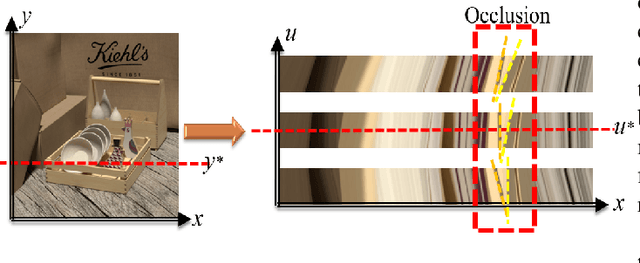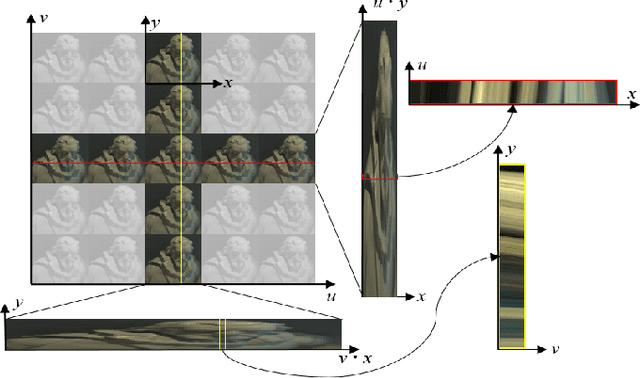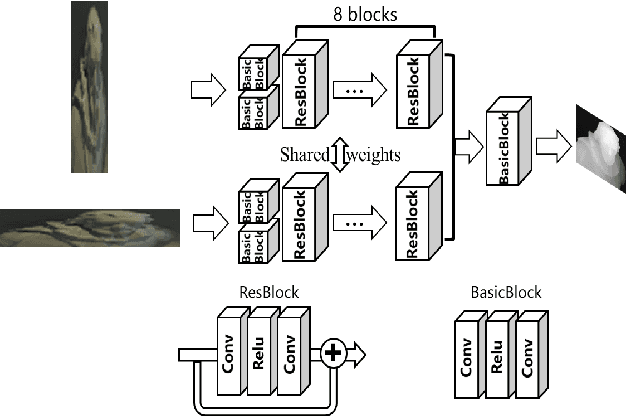Self-Supervised Light Field Depth Estimation Using Epipolar Plane Images
Paper and Code
Mar 29, 2022



Exploiting light field data makes it possible to obtain dense and accurate depth map. However, synthetic scenes with limited disparity range cannot contain the diversity of real scenes. By training in synthetic data, current learning-based methods do not perform well in real scenes. In this paper, we propose a self-supervised learning framework for light field depth estimation. Different from the existing end-to-end training methods using disparity label per pixel, our approach implements network training by estimating EPI disparity shift after refocusing, which extends the disparity range of epipolar lines. To reduce the sensitivity of EPI to noise, we propose a new input mode called EPI-Stack, which stacks EPIs in the view dimension. This method is less sensitive to noise scenes than traditional input mode and improves the efficiency of estimation. Compared with other state-of-the-art methods, the proposed method can also obtain higher quality results in real-world scenarios, especially in the complex occlusion and depth discontinuity.
 Add to Chrome
Add to Chrome Add to Firefox
Add to Firefox Add to Edge
Add to Edge